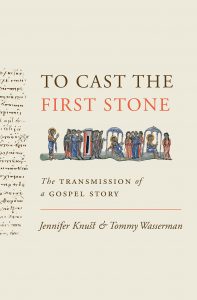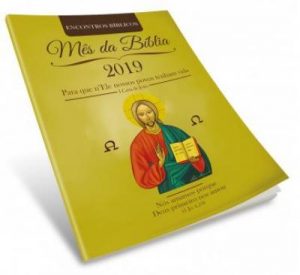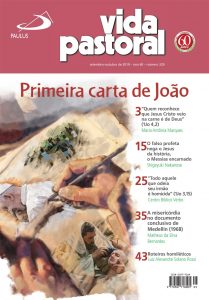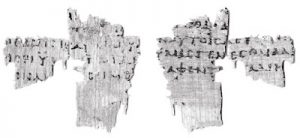Larry W. Hurtado escreve, em 23 de agosto de 2019, em seu blog, sobre as origens da devoção a Jesus nos primórdios do cristianismo. Um tema no qual ele é especialista.
The Origins of Devotion to Jesus in its Ancient Context
(Several months ago, I was asked to write a contribution to a multi-author work on Jesus to be published in French, my contribution to deal with the origins of Jesus-devotion. I was given a word-limit, and so had to be brief. The result is something of a capsulized treatment of the matter. I post below the English version, which will be translated for the French publication. As will be clear from this posting, I’m still around and actually feeling better than expected, at least for now.)
Reverencing Jesus in prayers, hymns, and other devotional actions may be so familiar a part of Christian life and worship that we may not realize how much it was an innovation in the historical setting in which it first appeared. To be sure, in the larger Roman religious environment of the early first century A.D. there were many deities and divinized human figures, all of whom received worship of various types in the general populace. But the Jesus-movement (which became “Christianity”) emerged in the more specific setting of ancient Jewish tradition, in which the exclusivity of the one biblical deity was of paramount concern. In Jewish practice, public worship, including especially sacrifice, was to be restricted solely to the God of Israel, and it was considered idolatry to worship any other figure. The many gods and deified heroes of the larger Roman world were regarded in Jewish tradition as false and blasphemous. In this context, the inclusion of Jesus in the worship practices of the early circles of the Jesus-movement was a remarkable and, indeed, unique development.
This gave earliest Christian devotion a distinctive “dyadic” shape, with God and Jesus both featuring centrally in beliefs and worship. Over against the polytheistic pattern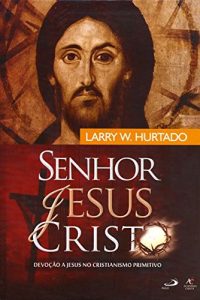 of the larger pagan world, early Christian teaching advocated an exclusivity, with solely one God, and this same exclusivity applied to the one Lord Jesus. In the context of ancient Jewish tradition, the duality in early Christian beliefs and devotional practice was also distinctive. The duality did not comprise a di-theism of two deities, however. Instead, Jesus was reverenced in his relationship to God “the Father,” as the unique Son of God, the Image of God, and Word of God, who had been exalted by God to be Lord of all creation.
of the larger pagan world, early Christian teaching advocated an exclusivity, with solely one God, and this same exclusivity applied to the one Lord Jesus. In the context of ancient Jewish tradition, the duality in early Christian beliefs and devotional practice was also distinctive. The duality did not comprise a di-theism of two deities, however. Instead, Jesus was reverenced in his relationship to God “the Father,” as the unique Son of God, the Image of God, and Word of God, who had been exalted by God to be Lord of all creation.
It is also important to note that this development happened quite early and quickly, and was more like a volcanic explosion than an incremental process. Already, in the earliest Christian texts, the undisputed letters of the Apostle Paul, we see reflected a body of christological claims and beliefs, and a pattern of devotional practices that are more taken for granted than explained. This indicates that by the time of these letters (from ca. 50 A.D. and thereafter) all these phenomena were familiar features of the religious life of circles of the Jesus-movement, both in the various diaspora cities where Paul founded his congregations and also in the Jewish homeland. So, for example, in these letters Paul refers to Jesus as God’s unique “Son,” indicating a distinctively close relationship of Jesus with God (e.g., Galatians 2:20; Romans 1:4, 9; 8:32. He also still more frequently refers to Jesus as “Christ” (= Messiah), indicating Jesus’ role and status as the agent of divine redemption (among many examples, Romans 1:1, 8, 21. Moreover, some two-hundred times Paul refers to Jesus as “the Lord” (Greek: Kyrios) who has been exalted to supremacy over all things by God (e.g., Philippians 2:9-11). In these texts, for believers in particular, the exalted Jesus is their Lord to whom they owe obedience and reverence.
Moreover, Paul’s letters also reflect the understanding of Jesus’ crucifixion as part of the divine plan of redemption, and foretold in the Old Testament scriptures (e.g. Romans 3:21-26; 4:24-25; 1 Corinthians 15:1-7). Already by the time of these Pauline letters, believers had been searching their scriptures and discovering foreshadowings of Jesus in them. As well, Paul’s letters show the belief that Jesus had been designated from before creation, and, indeed, had been “pre-existent” and was the agent through whom all things were created (e.g., 1 Corinthians 8:4-6).
In addition to these titles and christological claims, Paul’s letters also reflect a developed devotional practice in which Jesus was integral and central. This included, for example, the invocation and ritual confession of Jesus in early Christian circles. We see this reflected in Paul’s reference to the confession “Jesus is Lord” and to the ritual invocation of Jesus: “Everyone who calls on the name of the Lord shall be saved” (Romans 10:9-13). In this statement we have a biblical expression (“call upon the name of the Lord”) that originally referred to the invocation and worship of God, adapted here to designate the invocation of Jesus (e.g., Genesis 13:4; 21:23; Psalm 116:4, 13). Indeed, Paul refers to believers simply as “all those in every location who call on the name of our Lord Jesus” (1 Corinthians 1:2), and this ritual acclamation of Jesus as Lord is also reflected in 1 Corinthians 12:3. Note also Acts 2:21. Moreover, Paul also refers to this invocation or acclamation of Jesus in an Aramaic expression in the concluding lines of his letter to the Corinthian church (1 Corinthians 16:22). The expression used here, “Marana tha,” (“Our Lord, come!”), reflects the ritual appeal to the risen Jesus as “Lord” in circles of Aramaic-speaking Jewish believers as well as his own Greek-speaking churches. Paul does not translate the Aramaic expression here, probably because he had conveyed it to the Corinthians earlier in his time with them. Similarly, in other texts Paul refers to the practice of addressing God prayerfully in the Aramaic expression “Abba” (“Father,” Galatians 4:6; Romans 8:15). Paul apparently used these two Aramaic expressions and practices, one addressing God as “Father” and one addressing Jesus as “Our Lord,” to give verbal links between his Greek-speaking converts and the devotional practices of their Aramaic-speaking brothers and sisters.
To cite other devotional practices, the early Christian initiation rite, baptism, was from the first distinguished from other water rituals such as the baptism of John the Baptizer by being done “in Jesus’ name” (e.g., Acts 2:38; 8:16; 10:48; 19:5). This likely meant that those who were baptized called upon Jesus by name as part of the ritual, and were thereby marked as belonging to him. Unlike many other water rituals, early Christian baptism was a one-time rite of initiation into Christian fellowship, which was identified specifically with reference to Jesus.
Early Christian circles also typically had a shared meal as part of their gatherings. In a text where Paul addresses some problems about this meal in the Corinthian congregation, he refers to it as “the Lord’s supper,” and connects it specifically with Jesus’ redemptive death and his future return (1 Corinthians 11:17-34, especially v. 20). He also likens this corporate meal that honors Jesus to the sacrificial meals in honor of pagan deities, the cup and bread of the Christian meal comprising a sharing (koinōnia) in the blood and body of Christ. As a further indication of the strong liturgical meaning of the Christian meal, he demands an exclusivity of believers, who are to desist from all such pagan rites and participate only in “the table of the Lord” (1 Corinthians 10:14-22).
In other early Christian texts, we have references to ritual healings and exorcisms done “in the name of Jesus,” which likely means that they too involved calling upon the risen Jesus to effect these deeds (e.g., Acts 3:6; 16:18). As noted already, the Gospels portray Jesus as himself a healer and exorcist, and the early Christian healing and in one sense exorcism practices are a continuation of his ministry. But, whereas the Gospels accounts have Jesus healing and exorcising without invoking any other name or power, the early Christian practice of invoking Jesus by name means that his name and power were regarded as the power by which they were able to perform these acts.
As further reflection of the high and central place of Jesus in the early Christian circles, notice the dyadic formula of greeting in Paul’s letters, “grace and peace from God our Father and the Lord Jesus Christ” (Romans 1:7; 1 Corinthians 1:3; 2 Corinthians 1:2). Similarly, he refers to “the church of the Thessalonians in God the Father and the Lord Jesus Christ” (1 Thessalonians 1:1). These formulae link God and Jesus uniquely as the sources of grace and the basis of the churches. Paul’s letters also typically conclude with a benediction from Christ, as in 1 Thessalonians: “The grace of our Lord Jesus Christ be with you” (1 Thessalonians 5:28, with slight variations also in Philippians 4:23; Galatians 6:18; 1 Corinthians 16:23; Romans 16:20, and there is also the triadic benediction in 2 Corinthians 13:10). These expressions at the beginning and ending of his letters are now commonly thought to be Paul’s use of phrases that originated in group worship settings, and Paul appears to have used them to fit his letters for reading in the churches to which the letters were sent. On this basis, these expressions also give us glimpses of how Jesus was included with God in liturgical practices of greeting and blessing in early Christian circles.
Indeed, Paul’s letters also reflect the practice of including Jesus in prayer-appeals as co-recipient with God, as in 1 Thessalonians, “Now may our God and Father himself and our Lord Jesus direct our way to you.” And Paul continues with a prayer-wish that “the Lord” (Jesus) may cause the Thessalonian believers to increase in love and be strengthened in holiness (1 Thessalonians 3:11-13). In another letter, Paul refers to his own repeated prayer-appeals directly to Jesus to remove an affliction (2 Corinthians 12:8). In still another context, where he directs the Corinthian church to discipline an erring believer, Paul refers to pronouncing judgment “in the name of the Lord Jesus,” and to acting “with the power of our Lord Jesus” (1 Corinthians 5:3-5). This apparently involved a ritual expulsion of the offender from the church, but the point here is that the authority and power of the ritual is ascribed to the risen Jesus.
In all of these beliefs and devotional practices (and still others) the risen and exalted Jesus is central, and is joined with God as unique focus of faith and co-recipient of reverence. Note, for example, how Acts refers to the church in Antioch “worshipping the Lord” (Jesus), who is then depicted as speaking through Christian prophets, directing that Paul and Barnabas should be commissioned for the ensuing mission-travels related in the ensuing chapters (Acts 13:2-3). In a vision-scene, the book of Revelation portrays heavenly worship of God (“he who sits on the throne”) and the risen Jesus (“the lamb”) jointly, which likely reflects the sort of dyadic worship pattern long familiar to the author (Revelation 5:9-14). To underscore the chronological point here, this body of beliefs and practices clearly emerged and became familiar features of circles of believers within the scarcely two decades between Jesus’ crucifixion and the earliest of Paul’s letters.
Indeed, we should probably judge that this remarkable development emerged within the very earliest years, perhaps more accurately within the earliest months, after Jesus’ death, ca. 30 A.D. For prior to the experience that produced his profound religious re-orientation, Paul (then a zealous Pharisee) was a determined opponent of the young Jesus-movement seeking, in his own words, to “destroy” it (Galatians 1:13-16; Philippians 3:4-6). Paul refers to the “Damascus road” experience that produced his remarkable change in his religious stance as a “revelation” of Jesus as rightfully God’s unique Son (Galatians 1:16). This suggests that the core content of the experience was a radical revision of his view of Jesus in particular, whom Paul may initially have regarded as a false teacher and perhaps even as accursed by God. Now Paul’s revelatory experience is commonly dated within one to two years after Jesus’ crucifixion. So, already at that point, in the earliest years after Jesus’ crucifixion, this young Pharisee, who professes to have been exceptionally zealous for his ancestral tradition, found the young Jesus-movement sufficiently offensive to generate his outrage and his efforts to oppose it strenuously.
As to what may have generated his outrage, it is a reasonable proposal that the sort of strong claims about Jesus and the devotional practices that are reflected in his letters were at least one factor. That is, initially he likely found these christological claims and practices to be blasphemous infringements on the exclusivity of the one God that all Jews were expected to maintain, but his revelatory experience led him to embrace the very stance that he had opposed. In his sense of being specifically called to conduct an evangelical mission to gentiles, Paul seems to have felt a distinctive role. But in the core christological beliefs and devotional practices reflected in his letters, Paul was neither distinctive nor creative. Instead, he reflects beliefs and devotional practices that he accepted as part of his religious re-orientation from opponent to proponent of the gospel message.
One of the factors that generated this remarkable devotion to Jesus in earliest Christian circles was, of course, the impact of the historical figure, Jesus of Nazareth. During his own lifetime he generated and became the leader of a movement that was identified specifically with him. Jesus was regarded by his immediate followers and more widely as an authoritative teacher, a healer exercising miraculous power, a prophet sent from God, and perhaps God’s Messiah. But he also generated opposition. With the collusion of the Jerusalem temple authorities, Jesus was executed under the authority of the Roman governor. This appears to reflect the judgement that he claimed to be, or at least was acclaimed by his followers as, the Messiah-king, which amounted to sedition against Roman rule. On the other hand, his followers especially, but also others such as those who sought his favour in healing, revered him, as reflected in the many Gospels scenes where supplicants approach him. But there is no indication that this reverence included the sort of devotional practices that we see reflected in Paul’s letters. In short, although Jesus became the polarizing issue for followers and opponents already during his earthly activity, and was even held to be Messiah by at least some of his followers, he was not given the remarkably high level of reverence that appears to have erupted quickly and early after his crucifixion.
 So, additional factors and forces must have played a role in generating what was an unprecedented “mutation” in Jewish devotional practice. Indeed, it is likely that self-identifying Jews could have given Jesus the sort of devotion that we have noted only if they believed that God demanded it. The conviction that God had exalted Jesus to a supreme status and now required him to be reverenced accordingly is reflected in texts such as a passage in Paul’s letter to the Philippians, which declares, “God highly exalted him [Jesus] and gave him the name that is above every name, so that at the name of Jesus every knee should bend, in heaven and on earth and under the earth, and every tongue should confess that Jesus Christ is Lord, to the glory of God the Father” (Philippians 2:9-11). Similarly, the Gospel of John makes the claim that God requires “that all may honor the Son just as they honor the Father,” and that “anyone who does not honor the Son does not honor the Father who sent him” (John 5:23). So, how could early believers have come to this remarkable conviction?
So, additional factors and forces must have played a role in generating what was an unprecedented “mutation” in Jewish devotional practice. Indeed, it is likely that self-identifying Jews could have given Jesus the sort of devotion that we have noted only if they believed that God demanded it. The conviction that God had exalted Jesus to a supreme status and now required him to be reverenced accordingly is reflected in texts such as a passage in Paul’s letter to the Philippians, which declares, “God highly exalted him [Jesus] and gave him the name that is above every name, so that at the name of Jesus every knee should bend, in heaven and on earth and under the earth, and every tongue should confess that Jesus Christ is Lord, to the glory of God the Father” (Philippians 2:9-11). Similarly, the Gospel of John makes the claim that God requires “that all may honor the Son just as they honor the Father,” and that “anyone who does not honor the Son does not honor the Father who sent him” (John 5:23). So, how could early believers have come to this remarkable conviction?
At the earliest stage, we should probably posit powerful experiences as a factor. These likely included visions of the risen and exalted Jesus, perhaps prophetic oracles declaring his exaltation, and also a fervent searching of scriptures to find the meaning and validation of their experiences. As noted already, Paul certainly claimed that his own affirmation of Jesus’ high status was generated in an experience that he took to be a divine revelation. The early encounters with the resurrected Jesus such as those recounted by Paul to the Corinthians likely conveyed more than simply the joy that he had been made alive again (1 Corinthians 15:1-8). Those who had these experiences seem to have been convinced that Jesus’ resurrection also included his installation as Lord over all things. This seems reflected, for example, in Paul’s linkage of Jesus’ resurrection and his supreme rule in a passage in 1 Corinthians (1 Corinthians 15:20-28).
But the exaltation of Jesus to such a lofty status did not involve any diminution of the primacy of God. In fact, practically every christological claim in the New Testament texts is at the same time a theo-logical statement. It is, for example, God who raised Jesus and installed him as supreme Lord. Jesus did not displace God in the beliefs and devotional practices of early believers. Instead, as noted already, their beliefs and practices formed a dyadic pattern involving both the one God and the one Lord, and their reverence of Jesus was understood as obedience to God, and to the glory of God.
For further reading:
Larry W. Hurtado, Lord Jesus Christ: Devotion to Jesus in Earliest Christianity (Grand Rapids/Cambridge: Eerdmans, 2003). French edition: Le Seigneur Jésus Christ: La devotion envers Jésus aux premiers temps du christianisme. Paris: Éditions du Cerf, 2009.
Larry W. Hurtado, God in New Testament Theology (Nashville: Abingdon Press, 2010). French edition: <<Dieu>> dans la théologie du Nouveau Testament. Lectio Divina. Paris: Éditions du Cerf, 2011.
Lembro que o primeiro livro acima citado está traduzido para o português:
HURTADO, L. W. Senhor Jesus Cristo: Devoção a Jesus no cristianismo primitivo. São Paulo: Paulus/Academia Cristã, 2012, 936 p. – ISBN 9788598481494.
Este excelente livro apresenta um estudo histórico detalhado sobre a posição de Jesus na vida religiosa, fé e adoração dos cristãos desde os primórdios do movimento cristão até o fim do segundo século. Ostentando uma abrangência sem precedentes (o livro trata com propriedade desde a história do cristianismo primitivo passando por temas relacionados aos estudos bíblicos até a cristologia do novo Testamento). O livro Senhor Jesus Cristo de Larry Hurtado é de grande importância para diversos estudiosos e bastante acessível para o grande público interessado nas origens cristãs.
Leia também Hurtado Books on Jesus-Devotion – Larry Hurtado’s Blog: December 12, 2017.
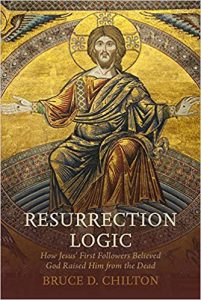 investigates the Easter event of Jesus in Resurrection Logic. He undertakes his close reading of the New Testament texts without privileging the exact nature of the resurrection, but rather begins by situating his study of the resurrection in the context of Sumerian, Egyptian, Greek, and Syrian conceptions of the afterlife. He then identifies Jewish monotheistic affirmations of bodily resurrection in the Second Temple period as the most immediate context for early Christian claims. Chilton surveys first-generation accounts of Jesus’ resurrection and finds a pluriform–and even at times seemingly contradictory–range of testimony from Jesus’ first followers. This diversity, as Chilton demonstrates, prompted early Christianity to interpret the resurrection traditions by means of prophecy and coordinated narrative. In the end, Chilton points to how the differing conceptions of the ways that God governs the world produced distinct understandings–or “sciences”–of the Easter event. Each understanding contained its own internal logic, which contributed to the collective witness of the early church handed down through the canonical text. In doing so, Chilton reveals the full tapestry of perspectives held together by the common-thread confession of Jesus’ ongoing life and victory over death.
investigates the Easter event of Jesus in Resurrection Logic. He undertakes his close reading of the New Testament texts without privileging the exact nature of the resurrection, but rather begins by situating his study of the resurrection in the context of Sumerian, Egyptian, Greek, and Syrian conceptions of the afterlife. He then identifies Jewish monotheistic affirmations of bodily resurrection in the Second Temple period as the most immediate context for early Christian claims. Chilton surveys first-generation accounts of Jesus’ resurrection and finds a pluriform–and even at times seemingly contradictory–range of testimony from Jesus’ first followers. This diversity, as Chilton demonstrates, prompted early Christianity to interpret the resurrection traditions by means of prophecy and coordinated narrative. In the end, Chilton points to how the differing conceptions of the ways that God governs the world produced distinct understandings–or “sciences”–of the Easter event. Each understanding contained its own internal logic, which contributed to the collective witness of the early church handed down through the canonical text. In doing so, Chilton reveals the full tapestry of perspectives held together by the common-thread confession of Jesus’ ongoing life and victory over death.